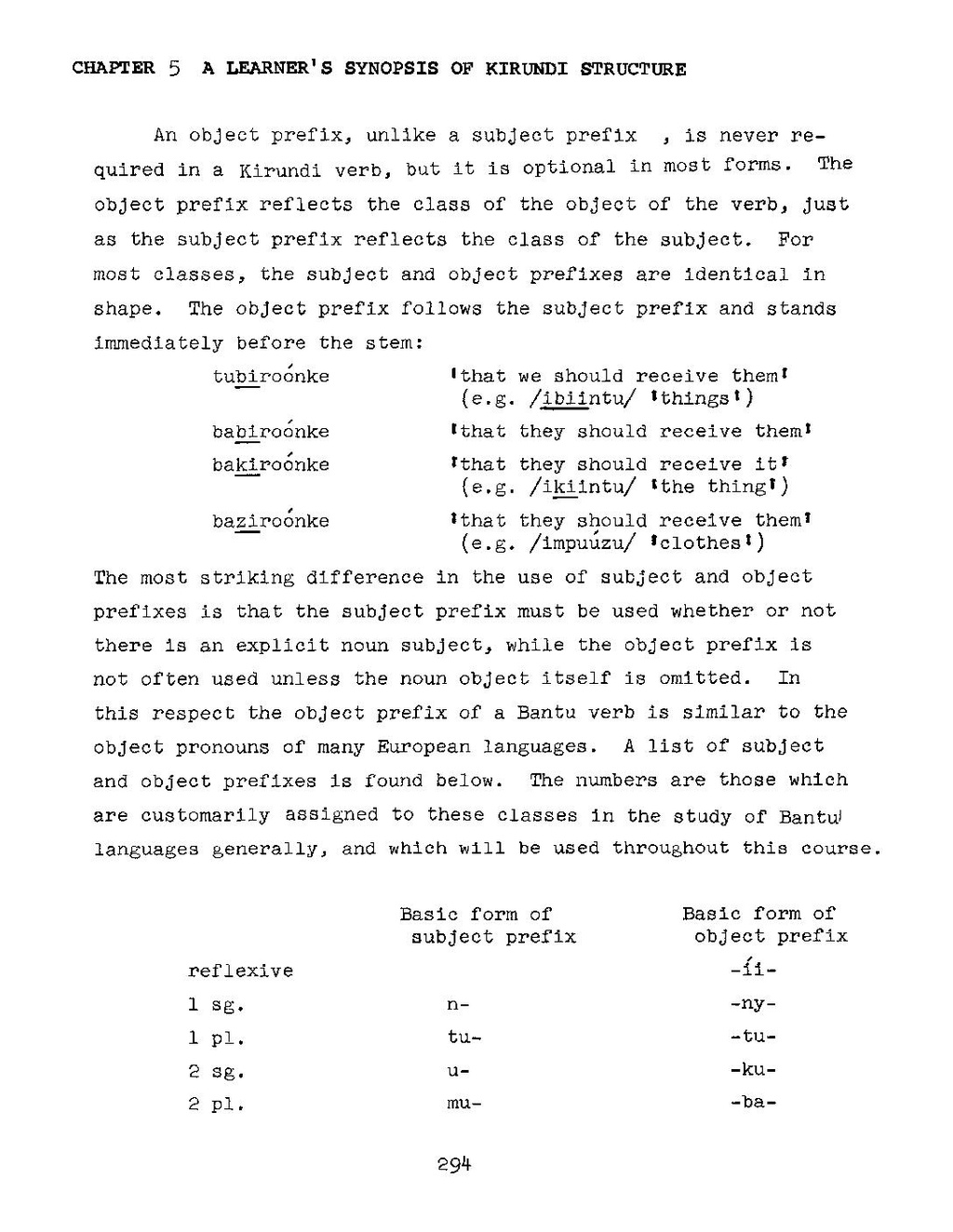An object prefix, unlike a subject prefix , is never required in a Kirundi verb, but it is optional in most forms. The object prefix reflects the class of the object of the verb, just as the subject prefix reflects the class of the subject. For most classes, the subject and object prefixes are identical in shape. The object prefix follows the subject prefix and stands immediately before the stem:
| tubiroónke | 'that we should receive them' (e.g. /ibiintu/ 3things') |
| babiroónke | 'that they should receive them! |
| bakiroónke | 'that they should receive it' (e.g. /ig;intu/ Ithe thing!) |
| baziróonke | 'that they should receive them' (e.g. /impúuzu/ 'clothes') |
The most striking difference in the use of subject and object prefixes is that the subject prefix must be used whether or not there is an explicit noun subject, while the object prefix is not often used unless the noun object itself is omitted. In this respect the object prefix of a Bantu verb is similar to the object pronouns of many European languages. A list of subject and object prefixes is found below. The numbers are those which are customarily assigned to these classes in the study of Bantu languages generally, and which will be used throughout this course.
| Basic form of subject prefix |
Basic form of object prefix | |
| reflexive | -íi- | |
| 1 sg. | n- | -ny- |
| 1 pl. | tu- | -tu- |
| 2 sg. | u- | -ku- |
| 2 pl. | mu- | -ba- |
294
